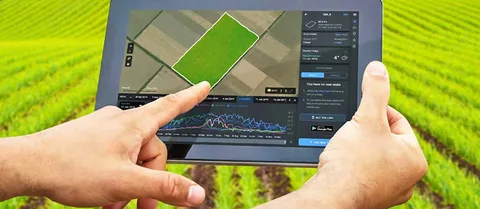The agricultural sector is undergoing a transformative revolution driven by technology. At the forefront of this transformation is smart farming with precision agriculture: tools and techniques that help farmers optimize productivity while conserving resources. This article explores the key aspects of smart farming, highlighting the innovative tools and techniques that make precision agriculture a game-changer for modern farming.
What is Smart Farming with Precision Agriculture?
Smart farming refers to the integration of advanced technologies such as the Internet of Things (IoT), sensors, drones, and data analytics into traditional farming practices. Precision agriculture is a subset of smart farming that focuses on managing fields at a micro-level, using precise data to make informed decisions. Together, smart farming with precision agriculture: tools and techniques enable farmers to increase yield, reduce waste, and promote sustainable farming practices.
Essential Tools in Smart Farming
1. Sensors and IoT Devices
Sensors play a crucial role in smart farming by continuously monitoring soil moisture, nutrient levels, temperature, and crop health. These IoT devices transmit real-time data to farmers, allowing them to respond quickly to the needs of their crops.
2. Drones and Aerial Imaging
Drones equipped with multispectral cameras provide aerial images that help farmers assess crop health, detect pest infestations, and map field variability. This aerial perspective aids in precision application of fertilizers and pesticides, minimizing environmental impact.
3. GPS and GIS Technologies
Global Positioning Systems (GPS) and Geographic Information Systems (GIS) help farmers map their fields accurately. These technologies guide machinery for planting, spraying, and harvesting, ensuring operations are carried out with pinpoint accuracy.
Techniques that Enhance Precision Agriculture
Variable Rate Technology (VRT)
VRT allows farmers to apply inputs such as seeds, water, and fertilizers at variable rates across a field, based on data collected through sensors and satellite imagery. This technique improves input efficiency and reduces costs.
Automated Machinery
Self-driving tractors and robotic harvesters equipped with AI algorithms perform tasks with minimal human intervention, increasing efficiency and reducing labor costs.
Data Analytics and Decision Support Systems
Data collected from various sources are analyzed using sophisticated software to generate actionable insights. Farmers can make data-driven decisions about irrigation schedules, pest control, and crop rotation, optimizing resource use.
Benefits of Smart Farming with Precision Agriculture: Tools and Techniques
Adopting smart farming with precision agriculture: tools and techniques results in higher crop yields, lower input costs, and improved environmental sustainability. Farmers benefit from increased efficiency, better risk management, and enhanced food security.
Conclusion
The future of agriculture lies in the adoption of smart farming with precision agriculture: tools and techniques that harness the power of technology to make farming more efficient and sustainable. By embracing these innovations, farmers can meet the growing global demand for food while protecting natural resources.


